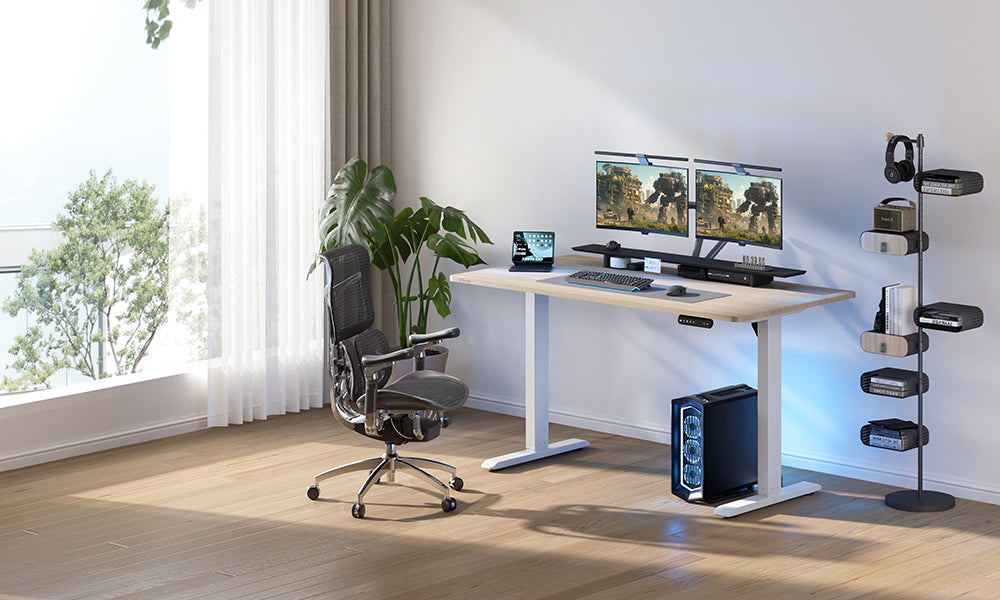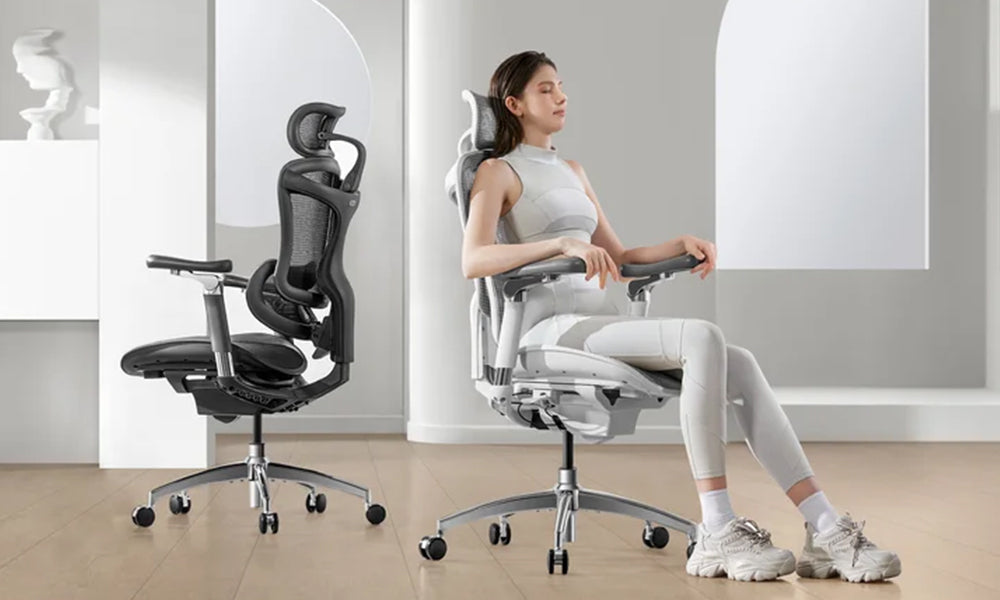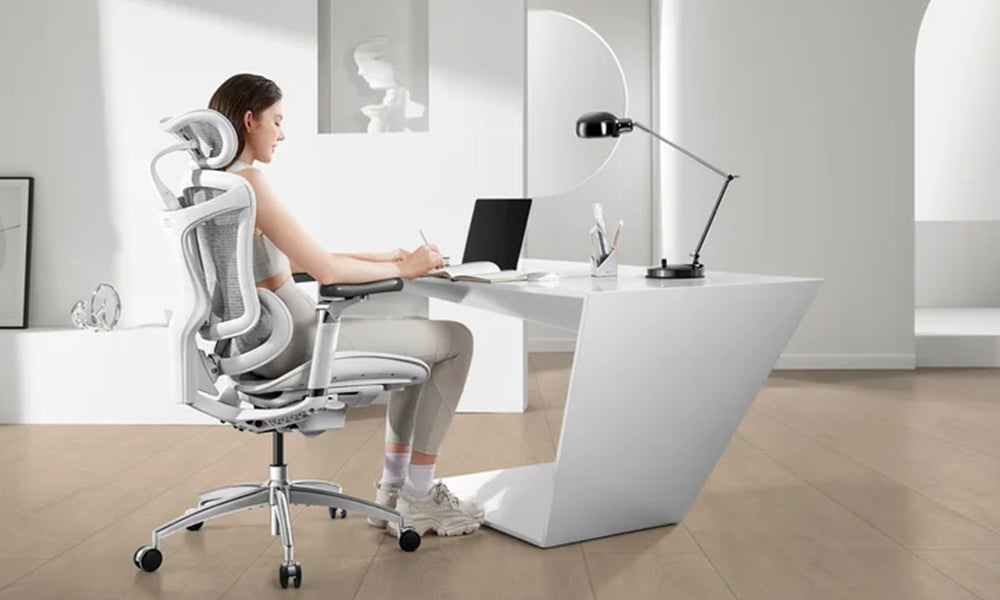In the modern workplace, ergonomics has become a crucial factor in maintaining health and productivity. Despite this, many people overlook the importance of having a desk that is appropriately sized for their body. One common issue is a desk that is too high. This seemingly minor problem can lead to a range of physical and psychological issues. In this blog, we'll explore the various consequences of working at a desk that's too high, how it affects your body, and what steps you can take to address this issue.
The Anatomy of Ergonomics
Ergonomics is the science of designing and arranging things people use so that the people and things interact most efficiently and safely. When applied to the workplace, ergonomics aims to optimize the work environment to prevent discomfort and injury while enhancing productivity. A key component of ergonomic design is ensuring that furniture, including desks, is suitable for the user’s height and body dimensions.
Recognizing a Desk That’s Too High
Before delving into the specific impacts, it's important to understand how to identify if your desk is too high. Here are some telltale signs:
Elevated Shoulders: If you find yourself hunching your shoulders to reach your keyboard or mouse, your desk is likely too high.
Extended Wrists: When typing, your wrists should be in a neutral position. If they are extended upwards, it indicates that your desk height is inappropriate.
Discomfort in Forearms and Elbows: Persistent discomfort or strain in your forearms and elbows can be a result of an incorrect desk height.
Postural Adjustments: Frequently shifting in your seat or adjusting your posture to accommodate your desk height suggests ergonomic misalignment.
Physical Consequences
1.Musculoskeletal Disorders (MSDs)
One of the most significant consequences of a desk that is too high is the development of musculoskeletal disorders. These include conditions such as tendonitis, carpal tunnel syndrome, and bursitis. When your desk is too high, it forces you to raise your shoulders, which can lead to shoulder and neck pain. Additionally, the unnatural angle at which you must position your wrists and arms can result in repetitive strain injuries.
2.Chronic Pain
Persistent use of an improperly sized desk can lead to chronic pain in various parts of the body. This includes the neck, shoulders, back, and wrists. Chronic pain not only affects your physical health but also your mental well-being, potentially leading to issues such as anxiety and depression.
3.Poor Circulation
Sitting for long periods with your arms and hands positioned incorrectly can impede blood flow. Poor circulation can cause your hands and fingers to feel cold and numb. Over time, this can lead to more serious circulatory issues, including the risk of blood clots.
4.Increased Fatigue
When your body is constantly working to compensate for a poorly designed workspace, it expends more energy. This can result in increased fatigue and reduced stamina throughout the day. Fatigue can significantly impact your productivity and overall quality of work.
Psychological Impact
1.Stress and Anxiety
Working in discomfort can increase your stress levels. Knowing that your work environment is contributing to physical pain can create anxiety, particularly if you feel unable to address or change the situation. This stress can negatively affect your concentration, decision-making, and overall job satisfaction.
2.Decreased Motivation
Chronic discomfort and pain can lead to a decrease in motivation. When sitting at your desk becomes an uncomfortable experience, it’s natural to dread starting work each day. This can lead to procrastination and a general decline in productivity.
3.Burnout
Prolonged physical discomfort combined with the mental strain of dealing with it can contribute to burnout. Burnout is characterized by physical and emotional exhaustion, cynicism towards work, and a sense of reduced professional efficacy. This can have long-term consequences for both your career and personal life.
Productivity Issues
1.Reduced Efficiency
Physical discomfort can make it difficult to concentrate on tasks, leading to reduced efficiency. If you are constantly adjusting your position or dealing with pain, it’s challenging to focus on the work at hand. This can result in lower quality of work and slower task completion.
2.Increased Mistakes
When your body is uncomfortable, your brain is preoccupied with that discomfort, which can lead to increased mistakes. This is particularly problematic in tasks that require a high level of precision and attention to detail.
3.Frequent Breaks
To manage discomfort, you might find yourself taking more frequent breaks. While taking breaks is generally beneficial, excessive breaks can disrupt your workflow and decrease overall productivity.
Solutions and Adjustments
1.Adjusting Desk Height
The most obvious solution to a desk ths height. Many modern desks come with adjustable heights. The ideal desk height allows your elbows to be at a 90-degree angle when your hands are on the keyboard, and your feet should be flat on the floor.
2.Ergonomic Chairs
If adjusting the desk height is not possible, investing in an ergonomic chairs with adjustable seat height can help. Ensure that the chair supports your lower back and allows your feet to rest flat on the floor or on a footrest.
3.Keyboard and Mouse Placement
Use keyboard trays or platforms to lower the height of your keyboard and mouse. This can help to achieve a more neutral wrist position and reduce strain.
4.Footrests
If your desk is too high and cannot be adjusted, using a footrest can help to elevate your feet and legs, promoting better posture and reducing strain on your lower body.
5.Monitor Height
Ensure that your computer monitor is at eye level to avoid neck strain. You might need to use monitor risers or adjustable monitor arms to achieve the correct height.
6.Regular Breaks and Stretches
Incorporate regular breaks and stretches into your routine to alleviate tension and promote circulation. Stretching your shoulders, neck, and arms can help mitigate some of the negative effects of a high desk.
The Role of Employers
Employers have a responsibility to provide a safe and ergonomic work environment. Here are some steps they can take:
1.Ergonomic Assessments
Conduct regular ergonomic assessments to identify potential issues in the workplace. This can help to prevent problems before they arise and ensure that employees have the tools they need to work comfortably.
2.Providing Adjustable Furniture
Invest in adjustable furniture that can accommodate the diverse needs of employees. This includes desks with adjustable heights, ergonomic chairs, and monitor stands.
3.Employee Education
Educate employees on the importance of ergonomics and how to set up their workstations properly. Providing training on ergonomics can empower employees to make adjustments that improve their comfort and productivity.
4.Encouraging Movement
Encourage employees to take regular breaks and move throughout the day. Providing spaces for stretching or short walks can help to reduce the physical strain of sitting at a desk for long periods.
Conclusion
The height of your desk plays a crucial role in your overall health and productivity. A desk that is too high can lead to a host of physical, psychological, and productivity-related issues. By recognizing the signs of an improperly sized desk and taking steps to address the problem, you can create a more comfortable and efficient work environment. Whether you’re adjusting your furniture, incorporating ergonomic accessories, or advocating for changes in your workplace, prioritizing ergonomics is essential for long-term health and success. Remember, a well-designed workspace is not just a luxury; it’s a necessity for maintaining your well-being and achieving your professional goals.



